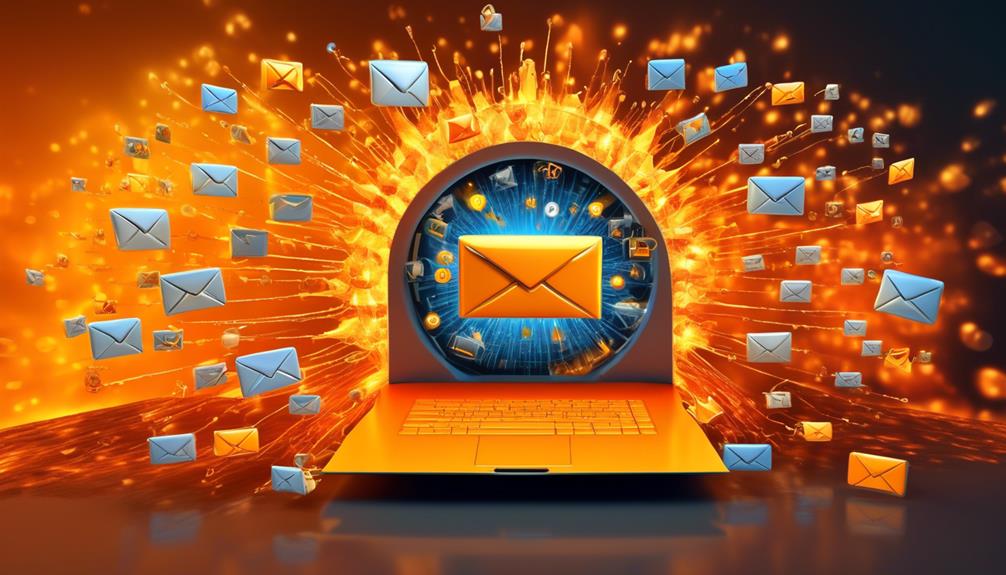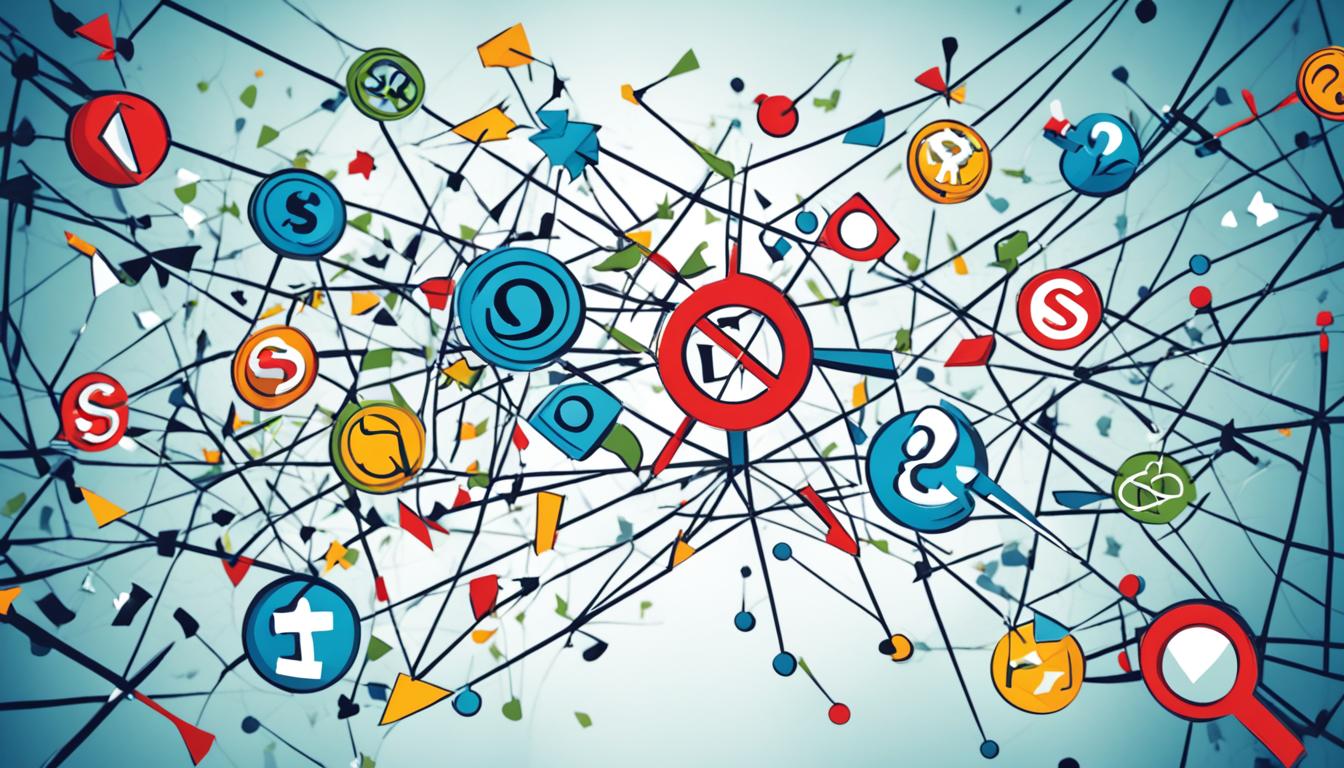Imagine a scenario where your emails effortlessly land in the intended inbox without being trapped in spam folders as we navigate the intricate world of email deliverability.
Enter the realm of Email Domain Warm-up Service, a strategic ally in our quest for optimal email performance.
In a digital landscape where first impressions are crucial, the significance of a well-warmed domain cannot be overstated.
But what exactly does this entail, and how can it revolutionize your email marketing game?
Join us as we explore the nuances and benefits of this essential service, unlocking the secrets to maximizing your email outreach potential.
Key Takeaways
- Email domain warm-up is crucial for deliverability and reputation management.
- Warm-up services improve email deliverability and sender reputation.
- Top tools for email warm-up include WarmUp Inbox and Lemwarm.
- Best practices for domain warm-up include starting with low email volumes and monitoring domain reputation.
Importance of Email Domain Warm-up
The significance of email domain warm-up can't be overstated in ensuring optimal deliverability and reputation management. When initiating a domain warm-up process for a new domain, it's crucial to understand that the foundation laid during this phase significantly impacts the future deliverability of your emails.
By gradually increasing the volume of emails sent, one can establish a positive sender reputation and avoid being relegated to the dreaded spam folder. Factors such as delete rate, spam reports, engagement rate, and bounce rate all play pivotal roles in shaping the domain's reputation.
To warm up an email domain effectively, adhering to best practices is essential. Knowing your sending limits, implementing email authentication protocols, and consistently providing high-quality content are key components of a successful warm-up strategy. Whether utilizing an email warm-up tool or manual tactics, the goal remains the same: to protect and enhance the domain reputation for optimal deliverability.
Understanding the nuances of different domains that influence deliverability, including subdomains, is critical in the email domain warm-up process. By managing the reputation of each domain meticulously, one can secure a strong sender reputation and increase the chances of emails reaching the intended recipients' inboxes.
Benefits of Warm-up Services

Beginning an email domain warm-up process with the assistance of warm-up services can significantly enhance deliverability and reputation management for optimal email campaign performance. When considering the benefits of warm-up services, several key advantages become apparent:
- Improved email deliverability: Through establishing a positive email reputation, warm-up services increase the likelihood of your emails landing in recipients' inboxes rather than being flagged as spam.
- Higher engagement rates: Gradually increasing email volumes and building trust with ISPs and ESPs can lead to improved open, reply, and click rates in your email campaigns.
- Enhanced sender reputation: Warm-up services enable you to demonstrate your domain's credibility and trustworthiness to ESPs, ultimately enhancing your sender reputation.
- Decreased bounce rates: With a warmed-up domain, you can anticipate a reduction in bounce rates as your emails successfully reach the main inbox instead of facing rejection.
These benefits underscore the importance of utilizing warm-up services to optimize your email sending practices and improve domain reputation.
Top Tools for Email Warm-up
Commence email warm-up procedures by exploring the top tools available in the market for enhancing domain reputation and email deliverability. When warming up a new email domain automatically, consider utilizing tools like WarmUp Inbox, Lemwarm by Lemlist, QuickMail Auto Warmer, and Warmbox. These tools offer features such as dynamic content, real people interaction, integrated platforms for cold email campaigns, AI algorithms, and detailed analytics.
Additionally, options like TrulyInbox, Folderly, Mailwarm, InboxWarm by OutreachBin, and Warm Up Your Email By Mailshake can further optimize your email warm-up process.
To ensure the best results, adjust your warm-up schedule based on different email domain acceptance thresholds. Pay close attention to elements like DKIM signing domain, Return-Path domain, and From/reply address to build a strong email deliverability and reputation. Be cautious of email content and links to safeguard your domain's reputation and prevent malicious activities.
Leverage subdomains to establish separate reputations while maintaining brand consistency and protecting deliverability. Remember, domain reputation is paramount for email deliverability, making the warm-up of a new domain crucial for preventing spam.
Best Practices for Domain Warm-up

Transitioning from exploring the top tools for email warm-up, we now focus on implementing best practices for domain warm-up to enhance email deliverability and reputation effectively.
- Start with a low volume of emails per day and gradually increase the volume over time.
- Segment your email list by receiver domain to better understand the impact on each domain.
- Implement email authentication protocols (SPF, DKIM, DMARC) to establish domain reliability.
- Avoid using spammy words or content in your emails to prevent them from being flagged by spam filters.
Properly warming up your domain involves adjusting your warmup schedule based on acceptance thresholds, monitoring domains affecting deliverability, associating transactional and promotional content with unique subdomains, and recognizing the importance of domain reputation in email deliverability.
How to Successfully Warm Up Email
To successfully warm up email, monitoring domain reputation and engagement rates is essential for evaluating the effectiveness of warm-up efforts. It's crucial to gradually increase the number of emails sent over a few weeks to establish a good reputation with ISPs and ESPs. Sending emails with relevant, high-quality content helps engage recipients and improve domain reputation, leading to higher deliverability rates to high reputation inboxes.
Warming up an email involves strategically sending emails while paying attention to the domains that impact deliverability, such as the DKIM signing domain, Return-Path domain, and From/reply address. Implementing email authentication protocols like SPF, DKIM, and DMARC can enhance domain reliability and credibility. Using subdomains can also help develop separate reputations while maintaining consistent branding.
Frequently Asked Questions
What Is the Best Way to Warm up Email Domain?
We warm up email domains by gradually increasing email volume to establish a positive reputation. Starting with a low volume and doubling it daily initially, we then grow by 20-50% as the volume rises.
Monitoring engagement rates helps adjust the strategy. Adapting to different domain acceptance thresholds is crucial. Pay attention to DKIM signing, Return-Path, and From/reply domains for reputation protection.
Using subdomains for content types maintains branding and deliverability. Building domain reputation takes time and effort.
What Are Email Warmup Services?
Email warm-up services are tools that gradually build trust with Email Service Providers by increasing email volume and engagement. These services enhance sender reputation, deliverability, and inbox placement through AI machine learning.
They offer advanced features like personalization, email verification, and automation. Saleshandy's features simplify response management and campaign optimization.
Adjusting the warm-up schedule based on domain thresholds is crucial, as domain reputation is key for email deliverability.
How Do I Warm up My Email Server?
To warm up our email server effectively, we gradually increase our email volume, engage with reputable addresses, and implement authentication protocols like SPF, DKIM, and DMARC.
We clean our email lists regularly, avoid deceptive content, and use unique subdomains for different types of emails.
How Long Does It Take to Warm up an Email Domain?
It typically takes a few weeks to warm up an email domain properly. During this period, gradually increasing the volume of emails sent each day is crucial. Building engagement with recipients through open rates, click-through rates, and replies is key for a successful warm-up.
Maintaining a good sender reputation and avoiding spam complaints are essential. Different domains, like DKIM signing domain and Return-Path domain, play a role in deliverability and should be managed to protect reputation.
What Is an Email Domain Warm-Up Service and How Does It Work?
An email domain warm-up service is crucial for sending effective warmup communication emails. It slowly increases the volume of emails sent from a new domain to establish a positive reputation with ISPs. It involves gradually sending emails to real, engaged contacts, helping to avoid being marked as spam.
Conclusion
In conclusion, email domain warm-up is crucial for improving email deliverability and engagement.
According to a recent study, companies that properly warm up their email domains can see up to a 30% increase in open rates and a 20% decrease in bounce rates.
By utilizing warm-up services and following best practices, businesses can ensure their emails reach the inbox and build stronger relationships with their recipients.










